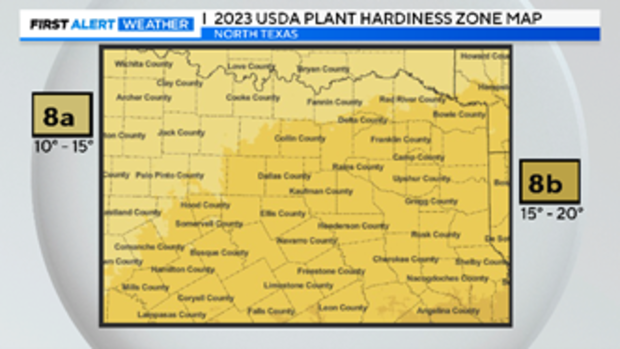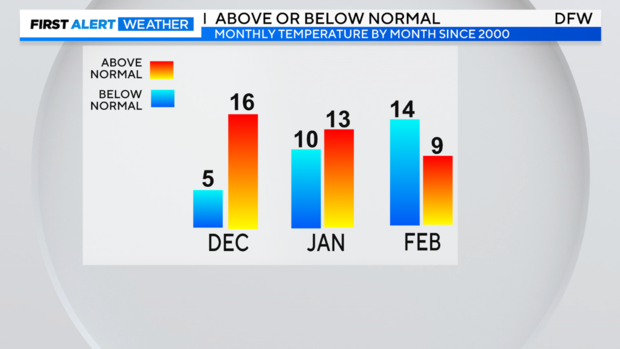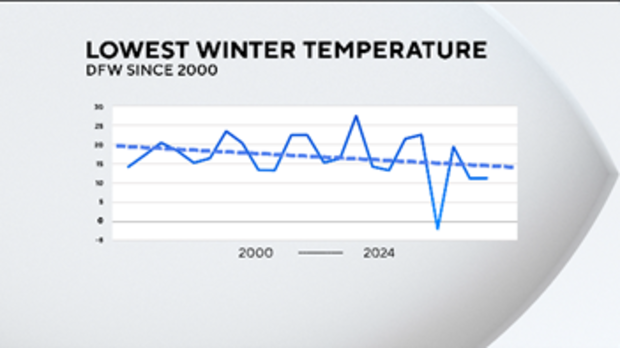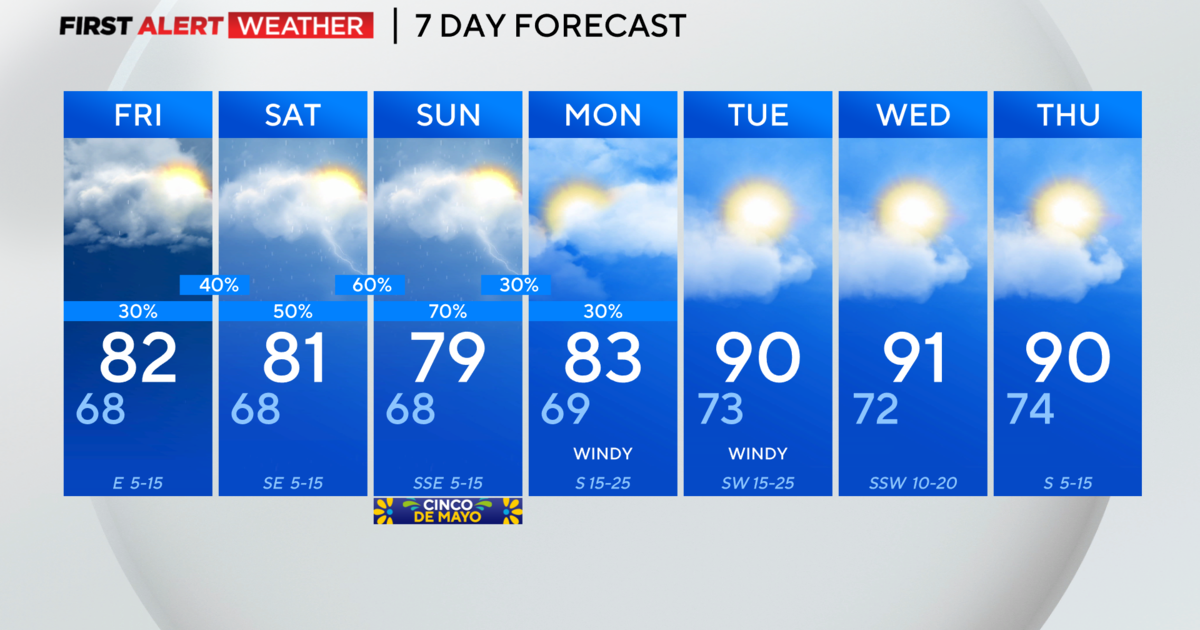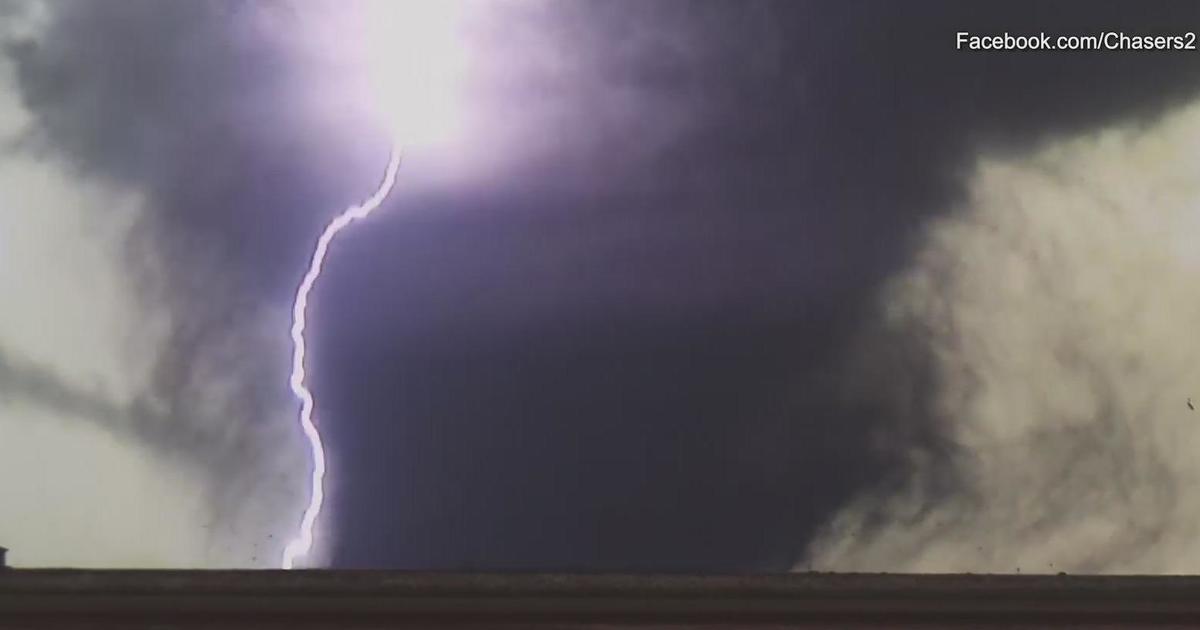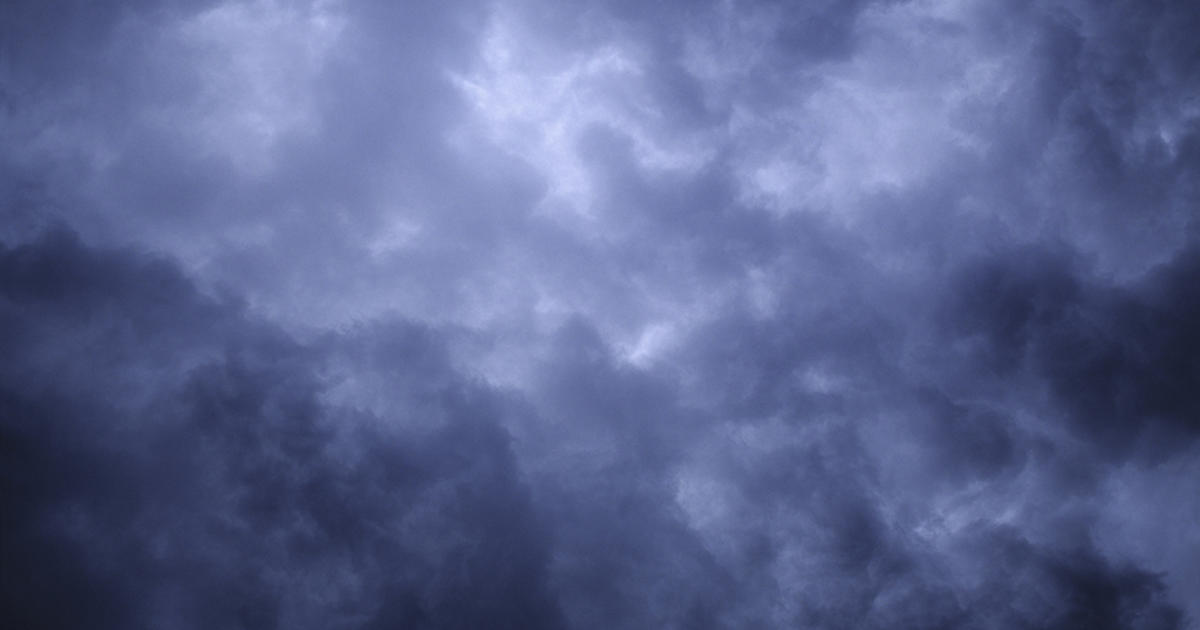Climate Connection: Plant hardiness zones
The United States is divided into 13 different plant hardiness zones, each with "A" and "B" subdivisions. This is a number assigned to a plant that tells you how cold of a temperature the plant can survive. The lower the number, the lower the temperature. An African Oil Palm you would plant in Florida is assigned a zone 11 (40 F). A Northern White Cedar you'd plant in Minnesota can survive in Zone 2 (-50 F). If you live here in the Metroplex, the newly assigned zone (as of last fall) is 8b (15 F). If you live in Parker County or west, that zone is 8a (10 F).
Look for the Plant Hardiness Zone assigned to your purchase on the label. In the fall of last year, the USDA rezoned North Texas for the second time in just over a decade. As the climate is warming up, the zones are shifting north. Compared to the previous century, every season in north Texas is getting warmer. 30 years ago, North Texas was in zone 7.
Looking at the recent weather history of DFW, there would be reason to be skeptical of the new 8b classification. While it is true the climate is warming here in north Texas, it is also getting more extreme: The hots are getting hotter, the colds are getting colder. As the graphic above shows, all seasons are getting warmer on average, but not all months. There is one exception: February.
There is a possible reason for this. Warmer starts to winter keep the colder air over northern Canada and the Arctic Circle bottled up early in the cold season. It just keeps getting colder waiting for its chance to spread south. Towards the end of winter, it becomes just too cold and too dense to stay in place. When the weather pattern shifts enough for an Arctic invasion, the cold air is really cold.
Look at what has been happening at DFW since 2000. I listed the coldest temperature for each month in the cold season. On the far left column is the coldest temperature for that winter. Notice how many are getting below 15 F (zone 8b):
Also notice how those low temperatures are bunched up in the last 10 years. It seems it is getting colder. When I charted out the coldest winter temperature across the 125-year record, you can easily see the warming trend.
But look at the same chart but just since the year 2000. The average line goes in the opposite direction, down.
Of course, the line is heavily weighted by the historic low of -2 F from February 2021. But you can still see a higher number of temperatures below 15 F over the last 10 years compared to the start of the new century.
This weather pattern could easily shift warmer over the next decade. But remember, humans changed the chemistry of the atmosphere (more heat-trapping gases from the burning of fossil fuels) but we didn't change the angle of the sun.
The sun doesn't show up inside the Arctic Circle during the winter season. That air is still going to get very cold, even though the Arctic has shown the most warming over the last 50 years. The Metroplex still gets Arctic invasions of frigid air. But if there hasn't been an Arctic cold blast for a while (like the first half, Decembers are getting very warm), the air will be near record cold when it finally arrives deeper in winter.
My advice? Plant for Zones 8a or 7b, plants that can survive a winter temperature of 5 F or 10 F. You'll have better odds of not having to replace that plant (i.e., buy it again) over the next decade.
Jeff Ray is the senior First Alert Meteorologist at CBS News Texas and an avid gardener. When not covering weather, he is finding stories about our changing climate in north Texas. If you would like Jeff to come talk to your group about how changing weather patterns are changing the way we garden in this area, please email him at jaray@viacomcbs.com .
